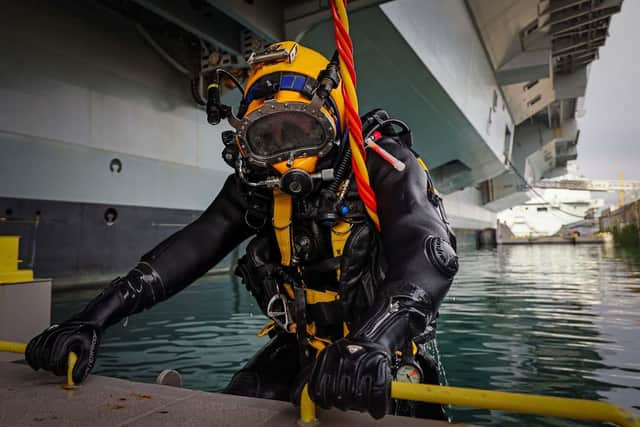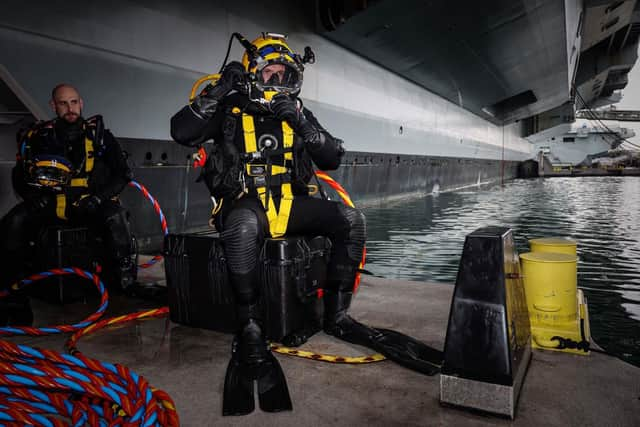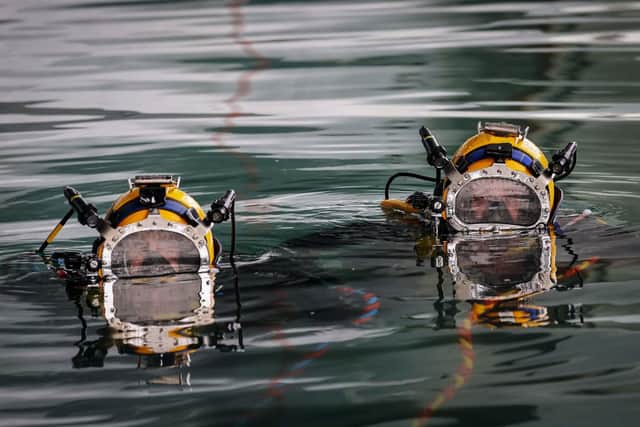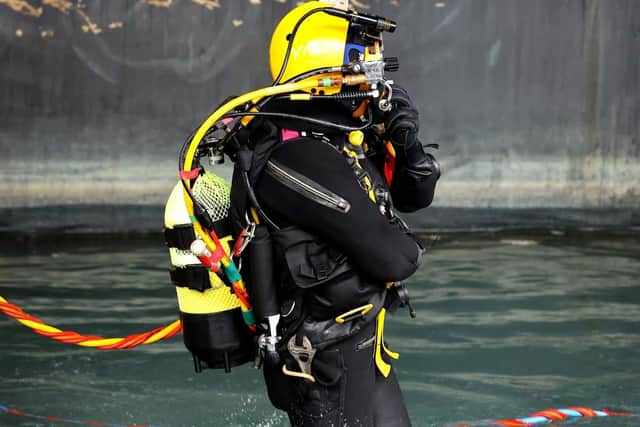Royal Navy's elite team of divers undergoes huge reform to make it 'more lethal and agile'
This article contains affiliate links. We may earn a small commission on items purchased through this article, but that does not affect our editorial judgement.
and live on Freeview channel 276
In the biggest shake-up of the team since 1996, the navy’s divers are now operating under the new banner of the Diving & Threat Exploitation Group (DTXG).
The overhaul has given the Senior Service’s frogmen access to the latest tech in order to keep the navy’s fleet, and the public, safe across the globe.


Advertisement
Hide AdAdvertisement
Hide AdBased in Portsmouth, Plymouth and Faslane, Royal Navy divers can be called to a range of tasks, including explosive disposal of historic ordnance and the rendering safe of improvised explosive devices around the UK as well as clearing sea mines in the world’s seas and oceans and deterring terrorists across the globe.
They are also capable of carrying out emergency underwater maintenance on warships including the Queen Elizabeth-class carriers and delivering discreet special operations.
The recent changes have enabled these elite diving teams to be able to carry out more missions while also continuing training with Nato and other allies on global exercises, the navy said.
Over the next few months, they will deploy to the United States, France, Norway and Iceland as well as continue their presence in the Middle East alongside partner nations and deployed ships, such as Type 23 frigate HMS Montrose, minehunters Middleton, Bangor, Chiddingfold and Penzance and RFA support ship Lyme Bay.


Advertisement
Hide AdAdvertisement
Hide AdCommander Sean Heaton, commanding officer of the DTXG, said: ‘This once-in-a-generation transformation has enabled the Royal Navy’s clearance divers to be the most agile, lethal and technically advanced they have ever been.
‘Capable of locating, exploiting, and disposing of threats to the Royal Navy and the UK’s interests, all while remaining ready to conduct emergency underwater maintenance to our ships and submarines.’
Lieutenant Commander Tom Forbes, of Echo Squadron – DTXG’s explosive exploitation experts – said: ‘For my unit this transformation means we can focus our attention on becoming experts in the field of maritime exploitation of conventional and improvised explosive devices and munitions – a capability that doesn’t exist anywhere else across UK defence.
‘It will give us great flexibility to explore new exercises in countries we haven’t worked in before.


Advertisement
Hide AdAdvertisement
Hide Ad‘It’s a really exciting time for us to develop new skills and evolve the way we contribute to future operations.’
Able Seaman (Diver) Ian Sanderson deployed last year with Portsmouth-based aircraft carrier HMS Queen Elizabeth and is now part of Delta Squadron.
He said: ‘This new way of working means we aren’t remaining static and we’re moving with the times
‘My unit started evolving last year but it’s good to see the second phase coming into play now and the new opportunities that come with that.


Advertisement
Hide AdAdvertisement
Hide Ad‘We are expanding on what we can currently do, while looking at the future roles we can play within the fleet. With the navy undergoing changes, it’s important we remain relevant and this transformation shows we can have significant impact.’
Chief Petty Officer Carl Thomas, of Alpha Squadron (DTXG’s special operations team), added: ‘This is the biggest and most exciting transformation period for the diving squadron in a generation.’
Looking for the latest Royal Navy updates from Portsmouth? Join our new Royal Navy news Facebook group to keep up to date.
A message from the Editor, Mark Waldron
You can subscribe here for unlimited access to our online coverage, including Pompey, with 70 per cent fewer adverts for less than 20p a day.
Comment Guidelines
National World encourages reader discussion on our stories. User feedback, insights and back-and-forth exchanges add a rich layer of context to reporting. Please review our Community Guidelines before commenting.
